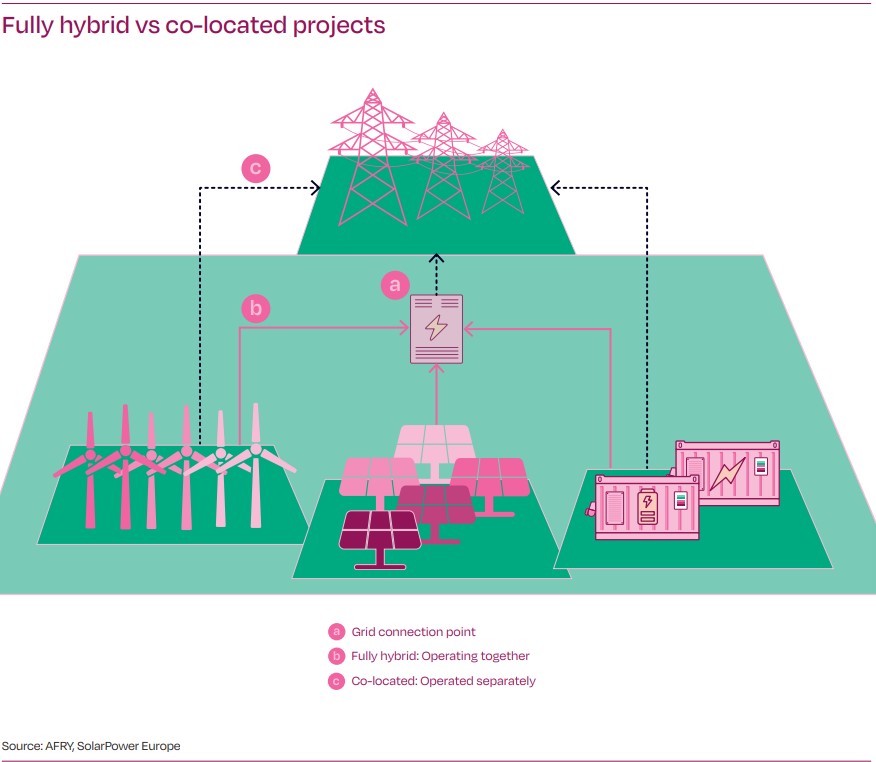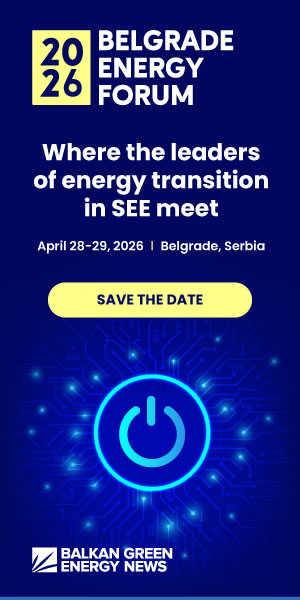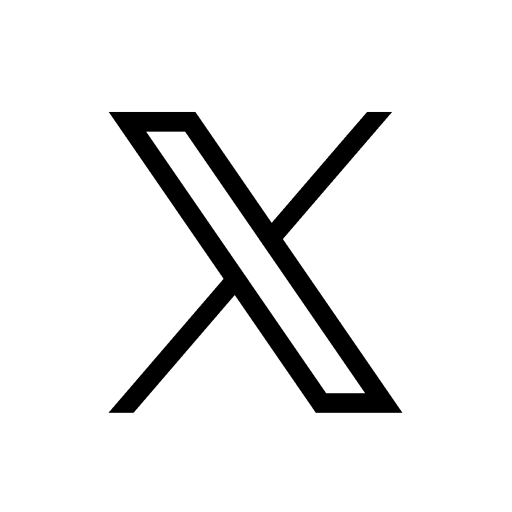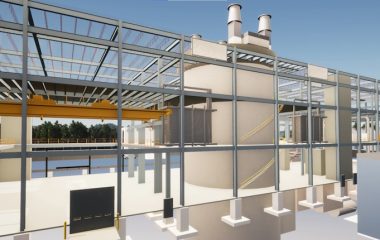
Photo: iStock
Hybrid solar, which combines solar with energy storage or wind, reduces the levelized cost of electricity by 10% compared to standalone projects, according to the latest report from SolarPower Europe.
Hybrid solar supports system flexibility, improves the cost-effectiveness of an asset, and makes energy generation more reliable, SolarPower Europe stressed.
“Embracing the benefits of Hybrid PV systems” reveals how hybrid projects enhance the security of supply by ensuring electricity generation even after sunset.

Hybrid solar projects have surged in recent years. Since 2015, solar (PV) + battery energy storage systems (BESS) have accounted for 5% of total BESS additions across Europe. The UK leads in hybrid PV+BESS installations, which make up 62% of total PV+BESS capacity, driven by strong policy support, market dynamics, and large-scale projects, according to the report.
PV+Wind hybrid projects, with only 555 MW installed, have yet to gain traction in Europe
In contrast, EU countries like Sweden (10%), Italy (8%), Germany (6%), Bulgaria (6%), and Denmark (5%) follow at a much lower level, with the rest of the EU-27 and Switzerland making up for only 3%.
The market for PV+Wind is equally concentrated, led by Poland with 277 MW, thanks to conducive policies and complementary generation patterns. However, in co-located setups, sharing the same connection point, regulations still need proper implementation.
The Netherlands (150 MW), Portugal (78 MW), and Denmark (7% share) have also advanced, with the UK and the rest of Europe lagging behind, with just 11 MW of PV+Wind, the report underlines.
Overall, PV+Wind hybrid projects have yet to gain traction in Europe, with only 555 MW installed by the end of 2024—less than 1% of the utility-scale solar fleet.
Five benefits

According to the report, Hybrid projects bring numerous benefits to end-users as they offer cleaner, cheaper, and more reliable electricity. The benefits can be distributed in five categories:
- Resources utilisation. By combining different generation technologies, a more efficient usage of the existing resources can be achieved.
- Efficient storage usage. Allowing hybrids to withdraw electricity from the grid enables an optimized system operation.
- Cost reduction. Hybrid projects realize cost synergies by maximizing existing infrastructure usage and reducing the financing costs for renewables.
- Curtailment avoided. By hybridizing renewables with storage, the surplus renewable output can be stored and injected later into the grid during hours of peak demand.
- Increased reliability. Combining different generation technologies and/or storage increases the reliability of the energy output.
Hybrid systems offer a wide range of cost-saving benefits, including reduced expenses for grid connections, land use, project development (such as feasibility studies), and operations and maintenance (O&M). Hybrid projects can also reduce the project financing costs.
The levelized cost of electricity (LCOE) of a renewable generator is reduced under a hybrid project as a result of the savings in the investment costs and operational expenditures associated with the connection of the project.
Furthermore, the risk perception of a hybrid project can be decreased, seen both from the debt and the equity perspective, as the project outcomes are more predictable and/or can be further guaranteed in a PPA (i.e., less merchant risk).
SolarPower Europe sets policy recommendations
When comparing solar PV and storage hybrid systems to gas plants, the International Energy Agency (IEA) provides detailed modeling on how the LCOE for solar plus storage compares to that of coal in China and India, as well as gas in the US. The analysis shows that solar plus storage is significantly more cost-effective in these markets, often by more than 20%.
SolarPower Europe stresses that the EU is far from exploiting the full potential of hybrid solar systems, and the report brings key policy recommendations.



















Be the first one to comment on this article.